In search of flowers starting with the letter U? To get you started, here is a list of popular and simple-to-grow species:
Flowers That Start With U – List Of Flowers That Name Starts With the Letter ‘U’

Urn Plant
The South American jungles are the natural habitat of the urn plant bromeliad, Aechmea fasciata. In the natural, it grows on other plants as an epiphyte also referred to as an air plant, where it gets the nutrients and moisture it needs from decomposing matter surrounding its roots and the moisture it requires from heavy rains. It’s crucial to try to as closely resemble the conditions in which your urn plant would naturally grow when taking care of it at home.
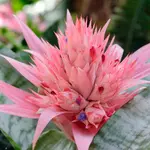
Rainwater collects in the stiff rosette of leaves that make up the urn in the rainforests. Home plant maintenance is maintaining a constant water level in the middle. Once a week, the water should be drained and replaced to maintain a healthy plant. Keep an eye out for leaf margins that are dry and brown. It indicates that your urn plant is dehydrated. The soil needs to be handled with care as well. Keep it damp, but not soggy. Rot will develop at the base of your urn plant bromeliad due to wet soil.
Your urn plant bromeliad can be fertilized once a month by spraying it with a weak foliar spray or by adding a half-strength solution to the water in the center. You can grow urn plants outside if you reside in a hardiness zone 10b or 11, provided you give them enough water. When grown outside, they don’t care much about the soil, but taking care of an urn plant indoors is different. Look at how they develop in the wild once more. Silt, decomposing waste and fragments of leaf and bark adhere to and accumulate around the epiphyte’s roots.
Ursinia
African plants belonging to the genus Ursinia are in the daisy and chamomile families. The plants in this genus bear the name Johannes Heinrich Ursinus in honor of the German scientist who flourished from 1608 to 1667.

The majority of the species of Ursinia plants have tall stems and round-headed blooms. There is just one row of ray florets, and the florets (individual flowers) in the heads are not all the same color (the outermost row). The petals may have three tiny teeth at the end, while the corolla, the flower’s main structure, has a strap-like form.
Uva Ursi
Arctostaphylos species uva-ursi sometimes referred to as kinnikinnick, are found all across the subarctic regions of the Northern Hemisphere. The common name for this plant in Canada and the US is kinnikinnick. It has evergreen leaves and can reach a height of 30 centimeters (12 inches). The fruit is a red berry, and the flowers range from white to pink.
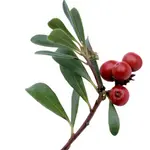
A tiny, woody groundcover shrub, uva-ursi normally grows to a height of 5–30 cm (2–12 in). Individual stems of the plant rarely grow taller than 15 cm in wild stands, which can be dense (6 in). Long, flexible, prostrate stems give rise to tall, branching stems. The leaves have a delicate, velvety feel and are initially white to pale green in hue before maturing to become smooth and red-brown. The three-scaled, tiny, solitary buds are a dark brown color.
Umbrella-Magnolia
From southern Pennsylvania to northern Georgia and Alabama, as well as west to central Kentucky and southwestern Arkansas, the umbrella magnolia can be found. These trees can be found sporadically throughout woods, in moist, deep soils near streams and swamp edges.
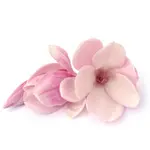
Umbrella magnolias often live 40 to 100 years, and the Appalachian Mountains are where you’ll find them most frequently. The umbrella magnolia is one of the eight native magnolias in the United States.
The umbrella magnolia is a little deciduous tree that normally reaches heights of 15 to 30 feet and diameters of up to 4 inches. It features coarse, rough leaves and an upright, asymmetrical branching structure.
An umbrella magnolia has simple, rectangular, alternating leaves that range in size from 10 to 24 inches long and 6 to 10 inches broad. On top, they have a dark green color, while the bottom is a delicate green color with short, silky hairs. The tree resembles an umbrella because the leaves are grouped close to the ends of the branches.
Upright-Virgins-Bower
Virgin’s Bower clematis (Clematis virginiana), a natural blooming vine that grows well in a range of lighting situations, might be the solution. The Virgin’s Bower vine is one of the few vines that bloom successfully in the shadow, despite lacking the enormous, spectacular flowers of other clematis kinds such as Nelly Moser or Jackmanii.
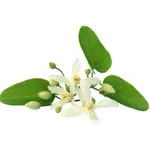
Eastern United States and Canada are the native home of the Virgin’s Bower clematis vine kind. This perennial vine grows in damp environments including lowlands, thickets, and wooded regions close to streams and ponds. The Virgin’s Bower vine has a reputation for climbing natural objects like trees and bushes. It can also grow along the ground, creating a thick canopy of foliage.
Other names for the Virgin’s Bower vine include woodbine, devil’s darning needle, and Italian clematis. Similar to other varieties of clematis, it is a kind of climbing plant that wraps the petioles of its leaves around an upright support.
Utah-Agave-Flower
One of the most cold-tolerant Agaves, the Utah Century Plant (Agave utahensis) forms an attractive rosette of blue succulent evergreen leaves that fade to olive green at the tips, with small teeth lining the margins. Once mature, this Agave will produce yellow flowers on towering flower spikes 6-12 feet tall. Thanks to its compact size, this is a great choice for rock gardens and outdoor containers.
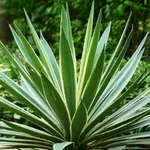
A gorgeous, tiny plant called the Utah Century Plant (Agave utahensis) gives low-water gardening year-round texture and appeal. The Agave utahensis seeds for this crop were gathered in Washington County, Utah, at an elevation of 5,000 feet. The Royal Horticultural Society awarded it the Garden Merit Award. It works well in xeriscapes, pots, and rock gardens.
While clay and rich, water-retentive loam soils should be avoided, the Utah Century Plant prefers well-drained rocky or sandy soils in full sun or part shade. Although it can withstand freezing temperatures, it cannot withstand prolonged periods of rainy weather.
Ulex-Europaeus
The plant has also been brought to the Americas, New Zealand, South Africa, and Australia, in addition to various regions of Europe. It is regarded as a weed and a dangerous invasive plant in many of these places.
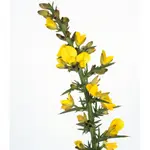
It was brought to New Zealand from Scotland as a type of hedge, but because of the climate there and the lack of many of its natural predators, it quickly became a serious problem for farmers.
Ugly-Fruit
The ugli fruit, also known as Jamaican tangelo or Uniq fruit, is growing in popularity due to its unique flavor, which combines citrus and sweetness. This fruit’s popularity is also attributed to how simple it is to peel.
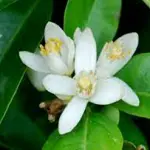
The Ugli fruit is a cross between a grapefruit and a mandarin orange. It is also frequently referred to as a tangelo, and this article interchangeably uses both terms.
Larger than a grapefruit, the teardrop-shaped fruit has a thick, rough, greenish-yellow skin that is easily peeled off. Its orange flesh is divided into sections by a white, net-like substance called the pith, just like the flesh of other citrus fruits.